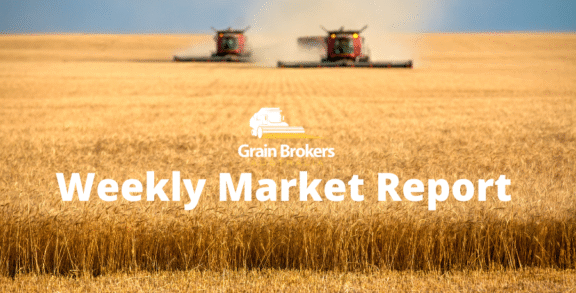
12th March, 2019
Strong demand continues in the midst of production uncertainty…
The Australian cattle market has been in retreat in recent weeks as the continued dry on the east coast forces cattle producers to sell down their herd. There is little or no pasture across most of New South Wales and southern Queensland, water supplies are drying up on many farms, and the cost of supplementary feeding is exceptionally high.
Traditional livestock selling centres such as Dubbo, Wagga Wagga, Casino and Tamworth in New South Wales and Dalby, Roma and Emerald in Queensland have all seen a substantial increase in yardings over the past few weeks. Some of these cattle will go direct to slaughter, but those that are suitable will make their way into the feedlot sector.
Meanwhile, the number of cattle on feed in Australia fell modestly in the final quarter of 2018, according to the latest Australian Lot Feeders Association (ALFA) and Meat and Livestock Australia (MLA) quarterly feedlot survey. The numbers, released last week, revealed that 2018 closed with just over 1.11 million head in feedlots across the country, a fall of just 1.4 per cent from the previous quarter’s record.
The result means that 2018 is the first year in history where there have been over one million head of cattle in the Australian feedlot system for the entire year. The unrelenting drought in the eastern states has been a significant contributing factor, with primary producers forced to offload their stock earlier than usual and in higher numbers.
The overwhelming sentiment is that feedlot numbers will remain strong in the first quarter of 2019. Export demand for Australian beef, particularly from China, remains strong, and the falling Aussie dollar has been assisting the cause. February shipments of Australian beef increased 11 per cent compared to the same month last year.
The state of Queensland dominates the Australian feedlot sector with just over 631 thousand head, or 56.7 per cent of the total number of cattle on feed. New South Wales has the second biggest herd, with around 326 thousand head, or 29.5 per cent of the total. Collectively, these two eastern states make up 86.2 per cent of cattle on feed in the country.
It is this dominance and concentration of demand that has been the overriding driver of feed grain movements from west to east over the last fifteen months. Poor grain production in northern New South Wales and Queensland for the previous two winters and three summers (including this summer) has led to a huge deficit.
If you add demand from the pig and poultry sectors, and from the specialised milling wheat and malting barley consumers, total wheat and barley movements into the ports of Brisbane, Newcastle and Port Kembla will most likely exceed 4 million metric tonnes (MMT) by the end of the third quarter in 2019.
On the international front, yet another month has passed, and yet another World Agricultural Supply and Demand Estimates (WASDE) report has been released by the United States Department of Agriculture (USDA). On the whole, it was quite benign, and futures markets reacted accordingly.
World wheat production for the 2018/19 marketing year is forecast to fall by 1.7MMT to 733MMT compared to the February estimate. Kazakhstan was the big mover with production down 1MMT, Argentina was down 0.3MMT, and Australia was up 0.3MMT to 17.3MMT.
Global wheat demand has been lowered by 5.1MMT to 742MMT compared to last month. The big mover here was India where demand was reduced by 3MMT, but their ending stocks were increased by 3MMT. The USDA have to balance the books somehow! US ending stocks were up 1.2MMT which is more than 1MMT below last year’s carry out, and the US wheat plantings are the lowest in more than a hundred years.
World barley production was increased by a meagre 0.1MMT compared to the February forecast. However, Australian production was increased by 1MMT to 8.3MMT and is now broadly in line with trade consensus in Australia. Global demand was decreased by 0.4MMT, but within that number was a decrease in China by 0.5MMT and an increase in Australia of, you guessed it, 1MMT.
Speaking of barley, there was a significant turnaround in market sentiment last week with old crop grower bids firming in both South Australia (up around $10) and Western Australia (up around $20). The renewed interest came from the big end of town, so it is most likely export driven.
Market rumours suggest that there may have been a delay to the imposition of Chinese import restrictions stemming from the current anti-dumping investigation. The Australian government and exporters have been expecting a decision for the last two weeks.
China has reportedly realised that they will need more Australian barley, particularly malting barley, before new crop Black Sea stocks become available in July. Sources suggest that Beijing may have deferred a decision until May. Maybe just a rumour or maybe it has some substance. Only time, and the Chinese, will tell.
In the meantime, grain consumers in northern New South Wales and southern Queensland are getting increasingly concerned about the continued dry and its impact on winter crop production in their back yard. New crop stocks would generally be available to the consumer when harvest ramps up early in the fourth quarter of the year.
However, several big end users are believed to have taken some risk off the table by locking away a proportion of their wheat and barley requirements through to the end of the year, and even into the first half of 2020. Soil moisture levels across the entire region are well below average for this time of the year and the wet season is winding down, so the chances of an above average crop are very low, and the chances of a below average crop are quite high at the moment.
The carry-in stocks will be zero, and any production will be keenly sought so it would seem quite prudent to take some cover at this juncture. If it is the highest price that these consumers pay for their 2019/20 requirements, then happy days!
Call your local Grain Brokers Australia representative on 1300 946 544 to discuss your grain marketing needs.





